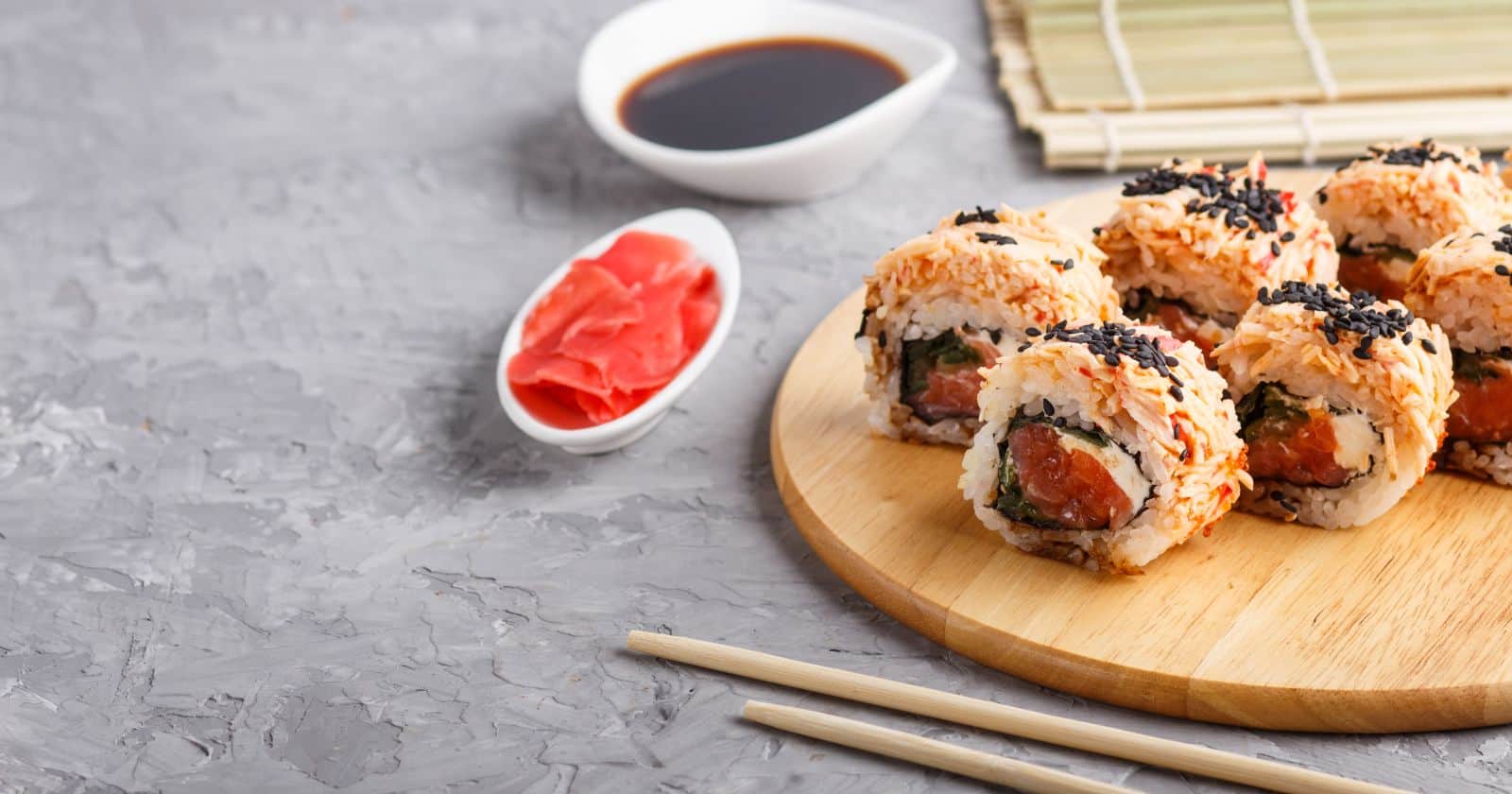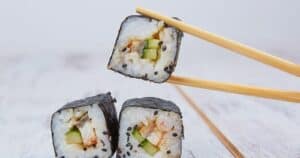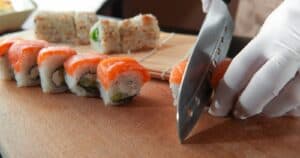Have you ever wondered if sushi is raw or cooked? Many people assume sushi equals raw fish. However, the full story of sushi is more complex. In this article, we’ll explore the diverse world of sushi and unravel the mysteries around raw versus cooked.
What is Sushi?
First, let’s start with a clear definition. Sushi refers to vinegared rice mixed with various toppings or fillings, called neta. The neta can be either raw or cooked. For example:
- Sashimi is always raw, thin slices of fish or meat eaten without rice.
- Nigiri sushi contains raw or cooked fish over compacted, vinegared rice.
- Maki rolls like tempura rolls and spider rolls contain cooked seafood or vegetables wrapped in rice and nori seaweed.
- Non-seafood sushi includes tamago (cooked omelet), inarizushi (fried tofu pockets), and kanpyō rolls (pickled gourd).
So while raw fish plays a big role, cooked ingredients are also very common in sushi. It showcases diverse flavors, textures, and cooking methods.
Raw Fish Sushi
Now let’s dive into the raw side of sushi. Here are some popular types:
- Sashimi – thin, fresh slices of raw seafood like tuna, salmon, or scallops.
- Nigiri – raw fish or seafood pressed over finger-shaped mounds of rice. Common choices are tuna, yellowtail, salmon, mackerel, amberjack, and sweet shrimp.
- Chirashizushi – assorted raw seafood and vegetables scattered over a bowl of sushi rice.
Raw fish sushi highlights the pure, fresh flavors of the seafood. The slices are cut and served immediately to optimize taste and texture. This style also provides a health boost since cooking fish can deplete some nutrients like omega-3 fatty acids.
Cooked Ingredients in Sushi
On the cooked side, here are some classic sushi options:
- Maki Rolls – nori seaweed wrapped around rice and fillings like cucumber, avocado, shrimp tempura, grilled eel, or omelet.
- Inarizushi – deep-fried tofu pockets stuffed with sushi rice.
- Tamagoyaki – Japanese omelet often seasoned with soy sauce or fish broth.
- Kanpyō Maki – sweet pickled gourd rolled up with rice and nori.
Cooking techniques like frying, grilling, roasting, or baking ingredients infuses more complex, intensified flavors. It also introduces appealing textures like crispy tempura or chewy grilled eel.
Regional Styles of Sushi
Tokyo-style sushi highlights ultra-fresh raw seafood while Osaka-style tends to use more cooked ingredients like batter-fried shrimps and rolled omelets.
Chirashizushi and donburi bowls can contain sashimi-grade raw seafood or lower-quality fish that is lightly cooked.
So the raw versus cooked ratio varies across Japan’s different sushi styles.
Sushi Etiquette
To enjoy sushi properly:
- Use chopsticks or your hands to pick up nigiri sushi. Don’t use a fork which will tear the fish.
- Eat sushi in one bite if possible. Don’t take multiple bites from one piece.
- Dip only the fish side of nigiri into soy sauce, not the rice.
- For rolls, dip a small end corner into soy sauce. Don’t soak the whole roll.
Following etiquette enhances the dining experience and shows respect for the sushi chef’s artistry.
Health Benefits and Risks
Raw sushi fish provides protein, omega-3s, and other nutrients. But raw seafood also carries a risk of parasites or food poisoning if improperly handled. Flash freezing fish can kill parasites and minimize risk. For cooked sushi, frying and grilling can produce harmful compounds like acrylamide and heterocyclic amines. But baking and poaching are healthier cooking methods. Talk to your doctor about diet and the pros and cons of raw versus cooked sushi.
How Sushi is Made
Crafting quality sushi is an art form requiring years of careful training. Here’s an overview of the process:
- Choose fresh, high-grade seafood – for raw sushi, only sashimi-grade fish is used. Fish is meticulously inspected.
- Prep the rice – Japanese short-grain white rice is washed, soaked, steamed, tossed with vinegar, sugar, and salt for the signature tangy flavor.
- Slice the fish – precise knife skills are needed to slice thick cuts for nigiri or thin sashimi slices.
- Assemble creatively – the chef molds rice and arranges fish or other ingredients artfully on top.
- Serve with care – sushi is presented immaculately on plates or boats garnished with daikon and wasabi.
It’s a noble craft requiring mastery of knife skills, rice preparation, seasoning, and artistic presentation.
So is sushi raw or cooked? In short, the answer is both. Sushi is a diverse world of culinary art. Now that you know the secrets of raw versus cooked sushi, it’s time to grab your chopsticks and indulge in this Japanese treasure.





